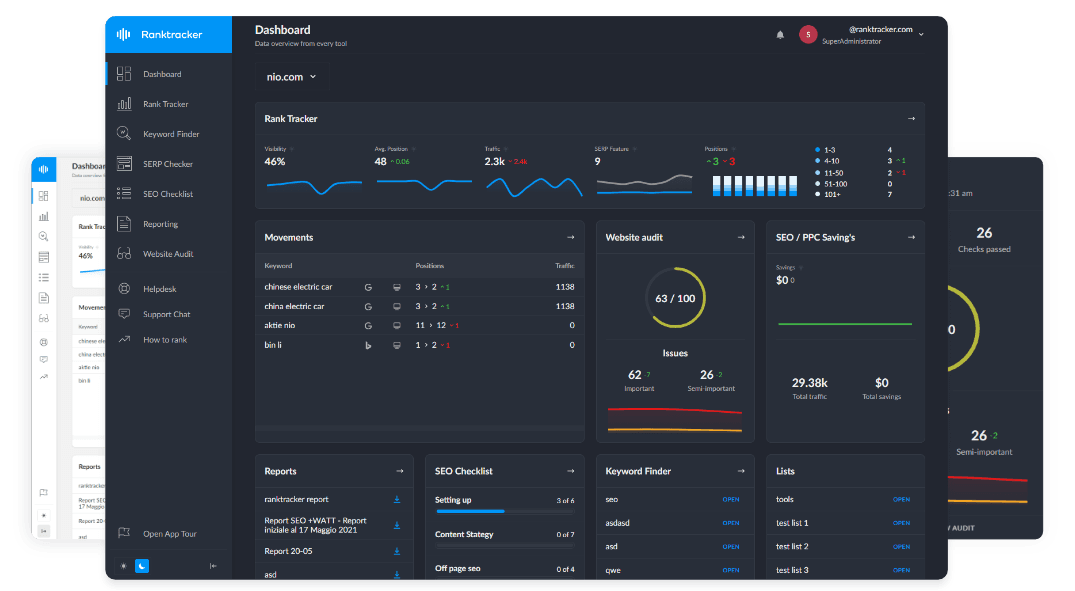Intro
Over the past few decades, Google has grown tremendously—and in doing so, it has helped grow nearly every industry in the world through digital presence and online promotion. From non-profit organizations to for-profit companies, businesses invest time and money to rank higher in search engines, which has proven to deliver long-lasting results.
However, a new frontier has emerged with the rise of generative AI. This shift introduced a trend where people now use tools like ChatGPT and Gemini to ask questions, alongside their continued use of Google and Bing. As a result, the landscape has transformed, effectively splitting the once singular concept of SEO into two: today, we also have AEO, or Answer Engine Optimization.
This new reality comes with new rules, and we cover them below.
SEO Proxies for Unbiased, Global Insights
In recent years, SEO proxy servers have become a secret weapon for marketers to gather unbiased, comprehensive search data at scale. An SEO proxy hides your IP address and location, letting you check search results from different places as if you were a new user each time. This means you can see what Google shows in cities like London, New York, or Tokyo — all without leaving your desk. The benefit? You see what real users see – unfiltered by your personal search history or location.
With proxies, you can avoid those pitfalls. These tools rotate your IP address and mimic natural browsing, so you won’t get blocked even when making frequent queries. They also let you see unbiased search results, without personalization getting in the way. This gives you more accurate data for SEO. For example, you can run keyword tracking, competitor research, and scrape search engine pages in the background, without alerting search engines or tipping off your competition.
Structure Your Content to Deliver Direct Answers
Traditional SEO was about ranking high and enticing clicks, but AEO is about being the answer. To achieve this, you must structure your content in a way that AI-driven engines (and Google’s answer boxes) can easily extract and display. That means anticipating the precise questions users ask and providing clear, concise answers within your content. Think of the formats that search engines love for direct answers: featured snippets, FAQ boxes, knowledge panel entries, and voice assistant responses. Your goal is to craft content that fits those formats, and also aims to be helpful to internet users. That’s the secret to be chosen by AI platforms when they find an answer for the user prompts.
Large language models prefer answers that clearly explain things, not ones packed with keywords. That’s why it’s best to write in a natural, easy-to-read tone. People now search using full questions like “How do I fix X issue?” instead of short phrases, so your content should be written to answer those questions directly. If your content answers these questions directly and clearly, it’s more likely to be chosen by answer engines. In practice, leading brands are structuring their pages with sections like “FAQ” or “Quick Answer” to capture those coveted answer box spots.
Core techniques include using question-based headings with succinct answers, adding FAQ sections, and covering related subtopics in depth (to signal authority on the topic). By doing so, you’re not just aiming for a high Google rank, but aiming to have your words spoken back by Siri or summarized by ChatGPT. That is the essence of AEO.
Deliver Authoritative, Trustworthy Content (and Use AI Wisely)
Even the best optimization tricks won’t help if your content lacks authority and trust. In the AI era, quality and credibility have become non-negotiable rules. AI answer engines like to pull responses from sources they consider reliable and thorough. Recent experiments show that well-established, information-rich content tends to dominate AI-generated answers.
The All-in-One Platform for Effective SEO
Behind every successful business is a strong SEO campaign. But with countless optimization tools and techniques out there to choose from, it can be hard to know where to start. Well, fear no more, cause I've got just the thing to help. Presenting the Ranktracker all-in-one platform for effective SEO
We have finally opened registration to Ranktracker absolutely free!
Create a free accountOr Sign in using your credentials
For instance, when one marketer tested which helpdesk software recommendations an AI would give, Zendesk showed up in 94% of the chatbot’s answers, while smaller competitors appeared only occasionally. This wasn’t because of SEO keyword stuffing – it’s because Zendesk has a huge amount of relevant, authoritative content, and the AI “knows” it as a dependable answer. Interestingly, the AI still mixed in other brands randomly at times, giving lesser-known companies a shot to be seen.
In a nutshell, one thing is certain—AEO differs in many ways from traditional SEO, but they share one crucial foundation that can never be compromised: quality.

